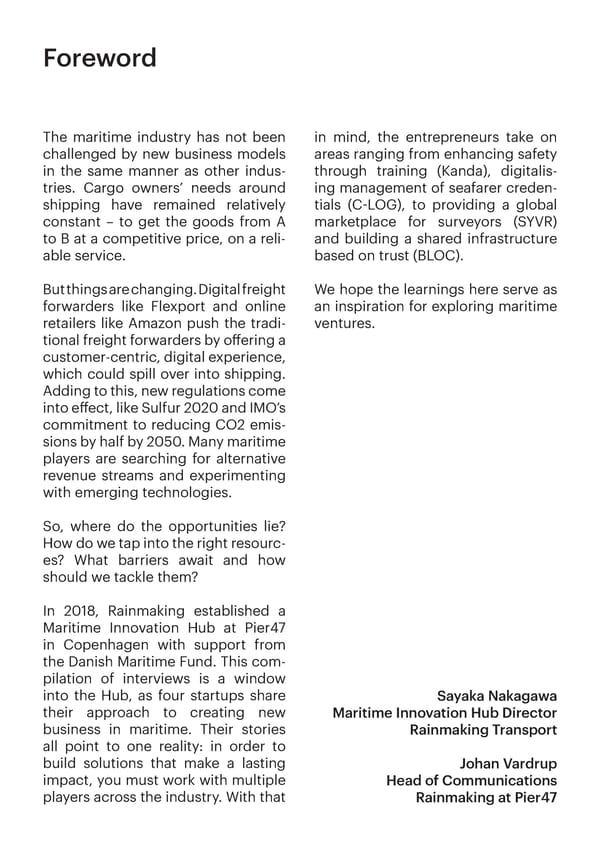Foreword The maritime industry has not been in mind, the entrepreneurs take on challenged by new business models areas ranging from enhancing safety in the same manner as other indus- through training (Kanda), digitalis- tries. Cargo owners’ needs around ing management of seafarer creden- shipping have remained relatively tials (C-LOG), to providing a global constant – to get the goods from A marketplace for surveyors (SYVR) to B at a competitive price, on a reli- and building a shared infrastructure able service. based on trust (BLOC). But things are changing. Digital freight We hope the learnings here serve as forwarders like Flexport and online an inspiration for exploring maritime retailers like Amazon push the tradi- ventures. tional freight forwarders by offering a customer-centric, digital experience, which could spill over into shipping. Adding to this, new regulations come into effect, like Sulfur 2020 and IMO’s commitment to reducing CO2 emis- sions by half by 2050. Many maritime players are searching for alternative revenue streams and experimenting with emerging technologies. So, where do the opportunities lie? How do we tap into the right resourc- es? What barriers await and how should we tackle them? In 2018, Rainmaking established a Maritime Innovation Hub at Pier47 in Copenhagen with support from the Danish Maritime Fund. This com- pilation of interviews is a window into the Hub, as four startups share Sayaka Nakagawa their approach to creating new Maritime Innovation Hub Director business in maritime. Their stories Rainmaking Transport all point to one reality: in order to build solutions that make a lasting Johan Vardrup impact, you must work with multiple Head of Communications players across the industry. With that Rainmaking at Pier47
 Changemakers Page 2 Page 4
Changemakers Page 2 Page 4